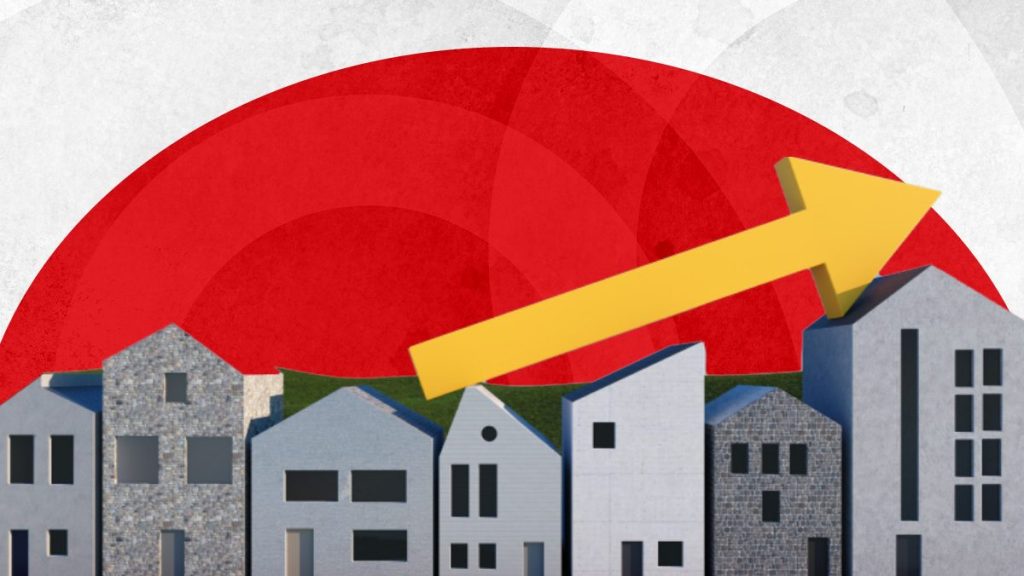Mortgage rates continued to inch towards 7% this week as the 10-year treasury yields climbed past the 4% threshold.
Investors assessed the state of the U.S. economy after Fitch Ratings downgraded the U.S.′ long-term, foreign currency issuer default rating from AAA to AA+ on Tuesday. The following day, the U.S. Treasury announced that it would sell off more than $100 billion of long-term securities.
Some economists say that this development contributed to drive up the 10-year treasury yield to its highest level since November 2022. However, there are differing opinions on this matter. According to HousingWire’s analyst Logan Mohtashami, the stronger labor data had a bigger impact on mortgage rates and the bond market than the sale of long-term securities or the default rating.
Freddie Mac’s Primary Mortgage Market Survey, which focuses on conventional and conforming loans with a 20% down payment, shows the 30-year fixed rate averaged 6.90% as of August 3, up from last week’s 6.81%. By contrast, the 30-year fixed-rate mortgage was at 4.99% a year ago at this time. The 15-year fixed-rate mortgage also rose this week to 6.25%, up 14 basis points from the prior week.
“The combination of upbeat economic data and the U.S. government credit rating downgrade caused mortgage rates to rise this week,” said Sam Khater, Freddie Mac’s chief economist. “Despite higher rates and lower purchase demand, home prices have increased due to very low unsold inventory.”
The sudden hike of the 10-year Treasury, along with upcoming employment and inflation data, will influence how much mortgage rates may rise in the short term, economists say. If employment and inflation pick up steam, mortgage rates are likely to continue climbing as markets prepare for further monetary tightening, said Realtor.com Economic Data Analyst Hannah Jones. On the bright side, the prospect of a recession is dimming for the next six to 12 months.
Other mortgage rate indices showed mixed results on Thursday morning:
HousingWire’s Mortgage Rates Center showed Optimal Blue’s 30-year fixed rate for conventional loans at 7.02% on Wednesday, compared to 6.85% the previous week. At Mortgage News Daily on Thursday morning, the 30-year fixed rate for conventional loans was at 7.20%, up 25 basis points from the previous week.
The economy remains on firm footing
Regarding the housing market, new economic data further solidify the view that the economy remains on firm footing, highlighted George Ratiu, chief economist at Keeping Current Matters.
“Construction spending advanced in June, a sign that companies and the government continue investing in real estate and infrastructure projects. Meanwhile, the number of open jobs retreated slightly, but remained above 9 million, while the number of workers leaving their positions for better ones remained elevated. Many companies still deal with a shortage of labor, as evidenced by the private payroll data which outpaced market expectations,” said Ratiu in a statement.
Look for payroll employment data tomorrow
“Tomorrow’s government report on payroll employment will add another data point to the bigger picture, with economists looking for changes in the unemployment rate and wage figures,” he added.
Meanwhile, active inventory fell compared to the previous year each week in July as many homeowners held off on listing their home for sale, noted Realtor.com Economist Jones.
“The drop in for-sale inventory was met with the typical seasonal pick-up in buyer demand, despite affordability constraints, which propped up home prices. In the second quarter of 2023, homeowner vacancy fell to a historical low of 0.7% as many homeowners stayed put and home shoppers snapped up available inventory, leaving fewer homes vacant,” she said.
This gap between supply and demand, exacerbated by a decade of under building, pushes prices up. Consequently, it also brings back market competition, especially in more affordable metro areas. Scarce inventory leads to a modest pace of sales for existing homes. On the new home front, growing options and more approachable prices have led to a pickup in sales transactions.
Lastly, Ratiu added that mortgage rates are expected to remain elevated for the next couple of months, keeping pressure on affordability.
“For buyers who are not in a hurry, the fall and winter months could bring better values and a less competitive environment to find the right home,” Ratiu concluded.






